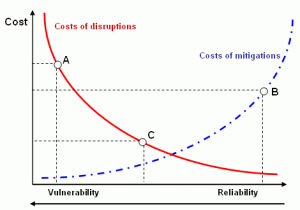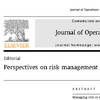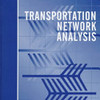 Today’s rather cryptic title reflects on the impacts of the current winter weather, and is a fitting follow-up to yesterday’s article on the security of supply. The UK transportation systems seems to be particularly suffering under heavy loads of snow, and now they seem to be running out of salt and grit for their snowed-in roads. No grit means no cleared roads means no one able to get anywhere and a no-show of people everywhere.
Today’s rather cryptic title reflects on the impacts of the current winter weather, and is a fitting follow-up to yesterday’s article on the security of supply. The UK transportation systems seems to be particularly suffering under heavy loads of snow, and now they seem to be running out of salt and grit for their snowed-in roads. No grit means no cleared roads means no one able to get anywhere and a no-show of people everywhere.
Salt supply crisis
I was alerted to this news by the BBC, reporting on “pinch-points” in the supply of salt in councils in Scotland.
In the Renfrewshire area drivers and residents were advised that gritters were concentrating on main routes in order to preserve their stocks.
North Lanarkshire Council said salt supplies were low and that it would not be clearing or gritting school car parks and side streets ahead of schools re-opening on Tuesday.
Thinking back to yesterday’s post on how Finland views the security of supply, road grit should perhaps be added to the list of critical supplies a society cannot exist without? After all, as I wrote in a previous post, roads really are more important than many other “critical” infrastructures, are they not? That said, reportedly this is the worst winter in 23 or so years in the UK, and stockpiling supplies of salt for 22 years while waiting for this winter may perhaps exceed the cost of disruptions caused by uncleared roads?
Would Norway fare any better?
While the UK is struggling with extreme piles of snow, Norway is struggling with extreme low temperatures and the Norwegian saying, “we’ve stayed out a winter night before”, meaning having gone through some arduous experience and not being afraid of enduring extreme conditions of any kind, has an almost literal meaning these days. With temperatures in most of Norway, for a week or so now, hovering well below -10C (14F) – check my home town Molde here – and in some places below -30C (-22F) or even close to -40C (-40F) – check Røros weather here – society is slowly grinding to a halt, but not really. We simply spend less time outdoors, and put on more heating indoors, resulting in an all-time-high power consumption yesterday morning. After all, we’re used to this, we’ve stayed out a winter night before. All over Europe, salt is in high demand. Not so in Norway; it’s simply to cold to use it.
Employee absenteeism
The TimesOnline proclaims that the last 48 hours of snow have cost Britain some 2 billion pounds, that is £2,000,000,000,000 (assuming they’re using UK billions, not US billions).
A poll of 213 companies by Peninsula, a law firm based in Manchester, found that 44 per cent of workers in the area stayed at home yesterday, according to the Manchester Evening News.
Is that a cost we should just live with? Perhaps.
When “remote” takes on a new meaning
Sky News is focussing on the impact snow has on the UK transportation systems, stating that if you’re more than two miles from a main road you’re likely not to see a snowplough for hours, maybe not even for a whole day, turning usually not so remote communities into literally isolated outposts.
Cost-benefit?
It all comes down to simple cost benefit. How much are we willing to spend to avoid how many disruption expenses? The figure below is a good illustration of the relationship of cost-benefit and vulnerability versus reliability: The disruptions costs, and thus vulnerability, increase from right to left (solid line), the cost of countermeasures to overcome potential disruptions, and hence the assumed reliability, increase from left to right (dotted line).

Today’s situation is (A), with high disruption costs. Investing in a certain countermeasure (B) is costly, but the probability of disruptions is lessened considerably and the disruption costs are almost negligible. A different countermeasure (C) reduces the susceptibility to disruptions somewhat, but the investment costs are much lower than in the former alternative. Consider which alternative is the most beneficial to society if investment costs and saved disruption cost are weighed against each other? Note the point where the two curves intersect. The expected cost of disruptions (or the expected benefits of avoiding disruptions) is here equal to the cost of countermeasures. This is the socio-economically optimal level of expected disruption costs (and the optimal expenditure on countermeasures). A movement towards this point from the left means that it will be cost-effective to implement a countermeasure. A movement from this point to the right means that society will be better off “living with the vulnerability”.
Extreme, not usual
Luckily, these events do not happen too often, but every time they do we’re reminded how vulnerable we are and how the infrastructure we take for granted is perhaps not so granted after all. As Allan Massie writes in The Telegraph, people have just forgotten how winter is supposed to be.
Links
- bbc.co.uk: Ministers deny salt supply crisis
- timesonline.co.uk: The cost of 48 hours of snow
- manchestereveningnews.co.uk: Snow chaos to cost £24m
- telegraph.co.uk: Bad weather or just old-fashioned winter?
- new.sky.com: Snow and ice bring UK to a halt
- tu.no: Saltmangel truer Europa
- tv2.no: Alle kjører på sommerdekk
Related
- husdal.com: Security of supply
- husdal.com: Life without trucks
- husdal.com: Are roads more important than computers?












